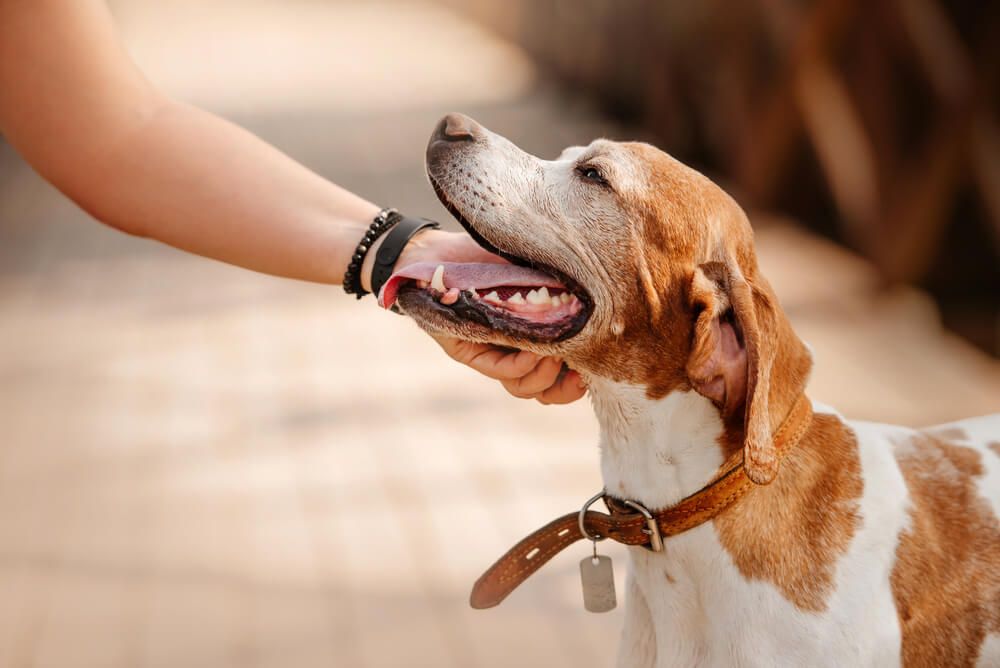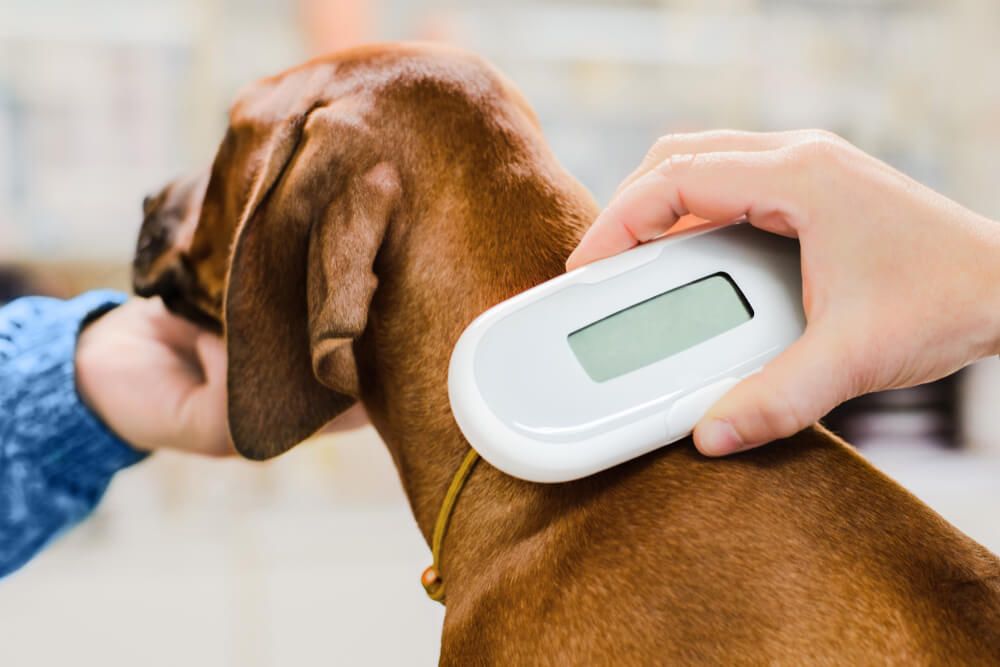Hey Ollie blog readers! We’re offering you an exclusive 60% OFF your starter box! Try now!
According to the American Humane Society, “Each year, approximately 10 million pets are lost in the United States, and millions of those end up in the nation’s animal shelters.” They go on to explain that, “Tragically, only 15 percent of dogs and 2 percent of cats in shelters without ID tags or microchips are reunited with their owners.”
So as a pet parent, having an up-to-date ID and working microchip is something that should be really important to you. We look at a number of ways to easily (and stylishly) identify your pet.
Collar tags

One of the easiest ways to ID your dog is by using collar tags. These small tags attach to a D ring on your pup’s collar. In the limited space provided you will want to include:
- Your pet’s name
- Your phone number
- Your address
- An Alternative phone number for the vet or trusted sitter
- Any information about your dogs medical needs (Some tags will say blind, deaf, takes medication etc.)
One of our favorite tag makers, Trill Paws, also offers mini charms that go on your dog’s tag to share additional information quickly and easily.
Printed collars
Some dogs are sensitive to the metals used to make tags or don’t like the sound. And while tags can be made from other materials and silenced using rubber rings, there are other options for these pups.
Pet parents can use their pup’s collars (or harnesses) to convey this information. Printed collars or harnesses are available so that if your pup is separated from you wearing these items they are easy to identify and reunite.
Microchips

A microchip is implanted into your pup, usually near a shoulder with a specially designed needle. The implantation is relatively painless so it can be done easily before a dog leaves a shelter. The chip is read with a handheld scanner and contains information about the dog and its owner. Vet hospitals and shelters can read these chips, so if you find a lost pup, take the dog to the closest vet or shelter to check for a chip.
Keeping the info on your dog’s microchip up to date is one easy way to help increase the chances that you are reunited if you and your pup are ever separated. Even if your dog runs away without their collar or another form of ID, the chip is with them 24/7 so it will provide a source of identification even when others aren’t available.
Tattoos
While not as common, some people will actually have identifying information tattooed on their dog. This helps to identify the dog as a pet. The tattoos can be done under anesthesia when the dog is being spayed or neutered. The most common places for tattoos are the inner thigh, belly, and ear.
While like the microchip, the tattoo is on your dog permanently, one thing to keep in mind is that tattoos can fade over time and need to be redone.
GPS

In the last few years, using GPS collars like Fi and Whistle’s Go Explore collar have gained in popularity. People have even begun to use Apple’s new Air Tag technology to find their pets. Special holders have been created to attach the tag to the pup’s collar.
Some GPS collars require a subscription service for continuous monitoring. Another concern is that some of these collars are bulky which makes them unsuitable for very small breed dogs like a chihuahua.
When it comes to ID two types are better than one
Since there are pros and cons to every type of ID we’ve outlined in this article, we suggest that you always have two types of ID on your dog at all times. When walking your pup use a collar with up-to-date tags and be sure your dog has a working microchip.
If you don’t use the collar, a harness, tattoo or some other identifying visual should be on your dog at all times.
Temporary tags for travel
If you are traveling with your pet, make sure your cell number is on their tag. If you take your pup camping with you, it’s a good idea to create temporary tags with your campsite location and phone number.
If your pet is scared on vacation and runs away, they may quickly become confused and disoriented by unfamiliar scenes and smells. You want anyone who finds your dog to be able to help your pup get back to you quickly.
Many pet owners are scared of being separated from their pets and for good reason. If you aren’t with your pet you can’t help them with things like crossing the street or avoiding toxic food. If you are reunited with your pet after they have been lost, it might be a good idea to have the vet give them a once over for any signs of injury.
Remember, the easier your pup is to identify the higher the likelihood you will be reunited.
The Ollie blog is devoted to helping pet parents lead healthier lives with their pups. If you want to learn more about our fresh, human-grade food, check out MyOllie.com.
Tagged As:

The nutrition your dog needs,
the food they want.

Enjoying our articles? Subscribe our Newsletters and get new articles directly to your inbox
You might also like
13 May 2025
8 MINS READ
Puppy Training Guide & Behavior Timeline
Bringing home a puppy is pure magic. It’s also pure chaos—tiny teeth, zoomies, accidents in the house, and moments that make you wonder if you’re raising a future genius or a tiny tornado. …
by Ollie Pets
10 May 2025
12 MINS READ
New Puppy Checklist: Guide To Prepare For A New Dog
Bringing home a new puppy? This checklist covers everything new dog owners need—from essential supplies to training, feeding, and first vet visits.
by Ollie Pets
3 April 2025
9 MINS READ
Home Remedies for Fleas on Dogs: 10 Natural Ways That Actually Work
Wondering what kills fleas on dogs instantly and naturally? If your pup is scratching like crazy, it may be time to take action. In this guide, we’ll show you the most effective home remedies for…







